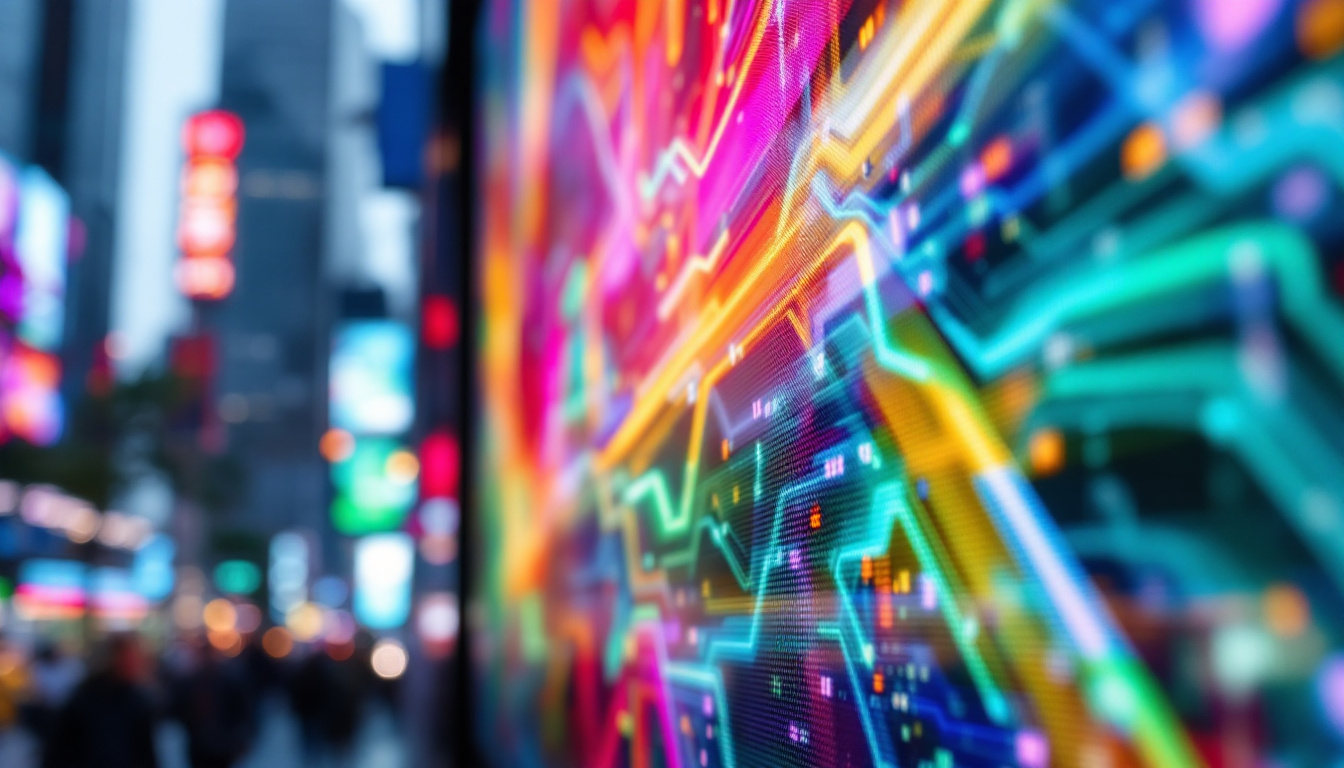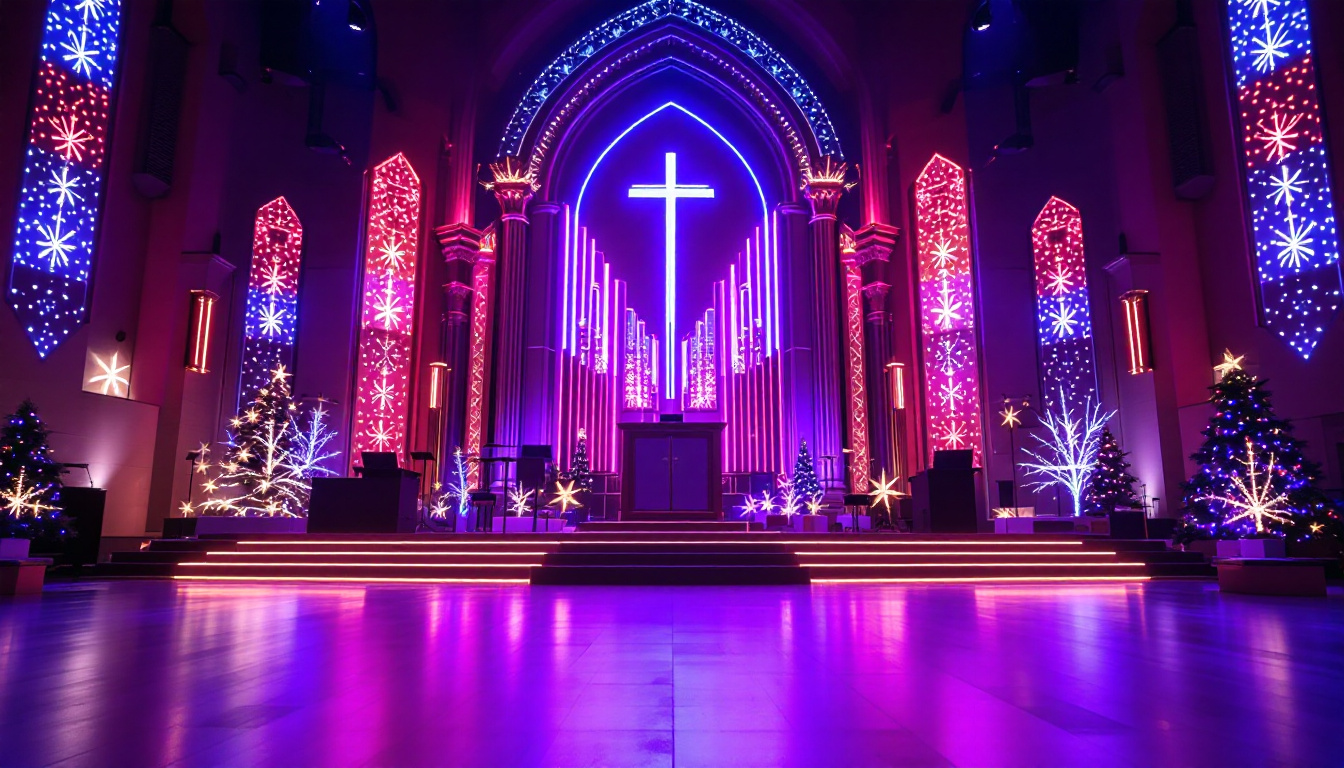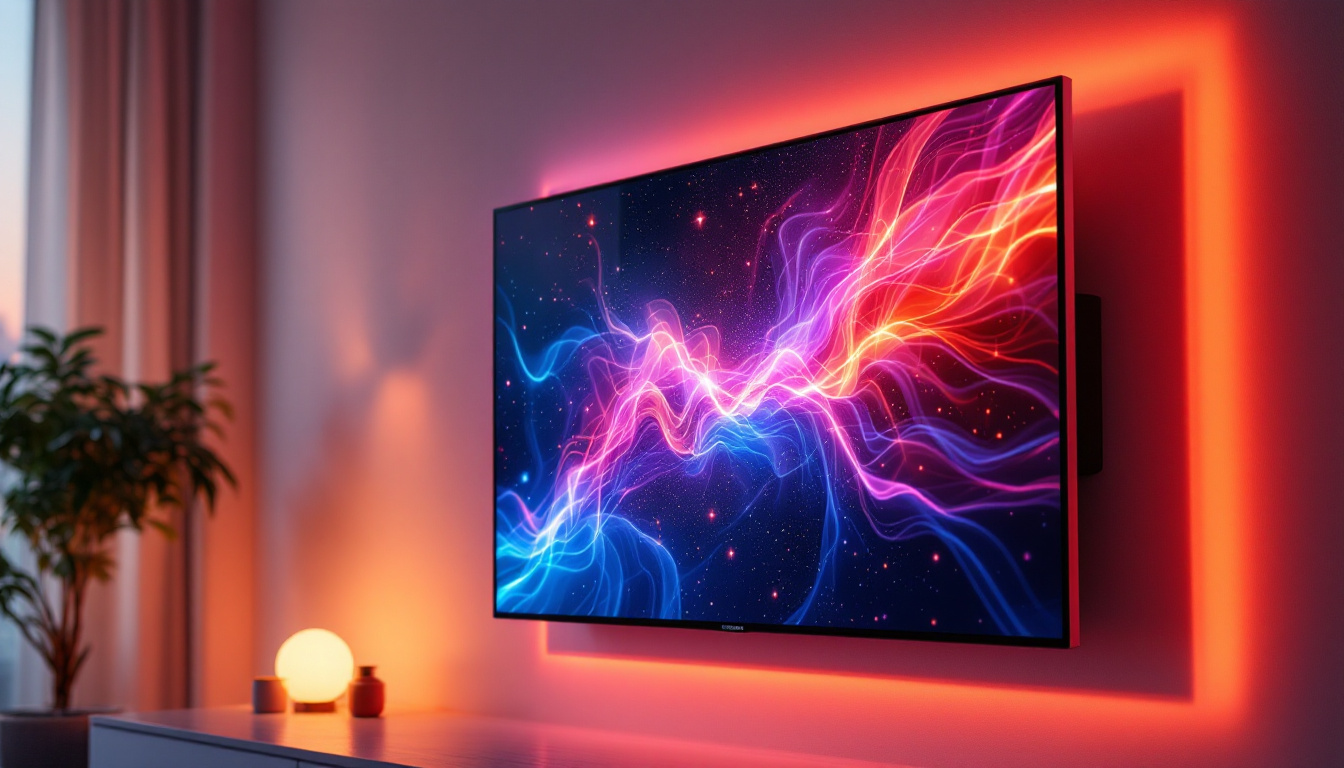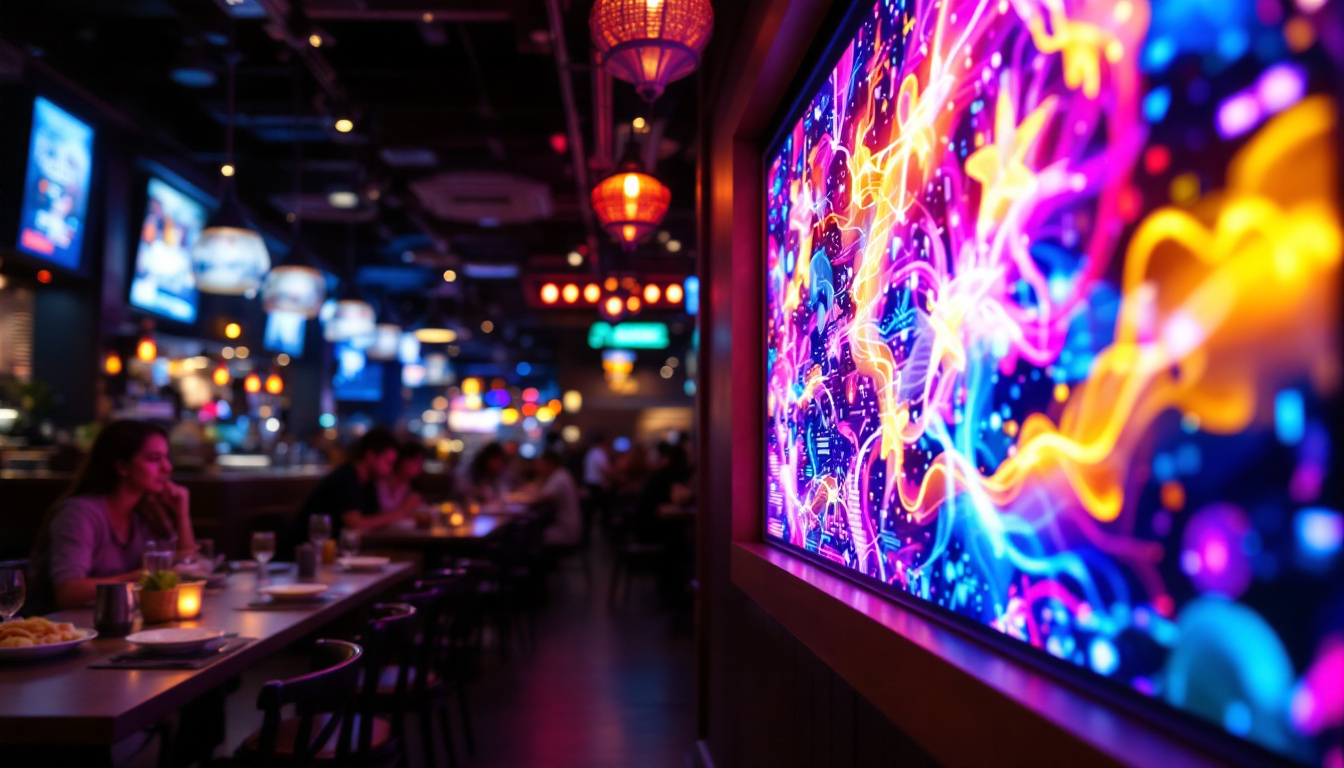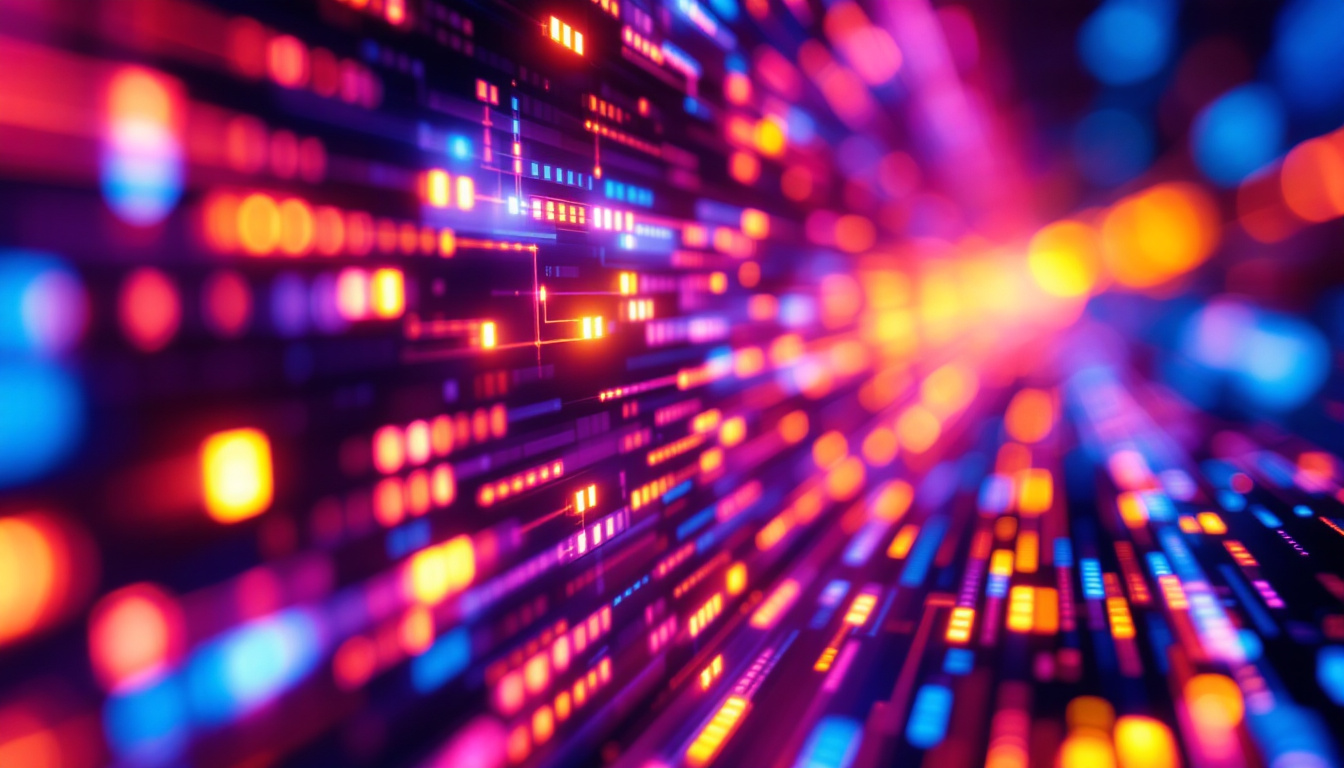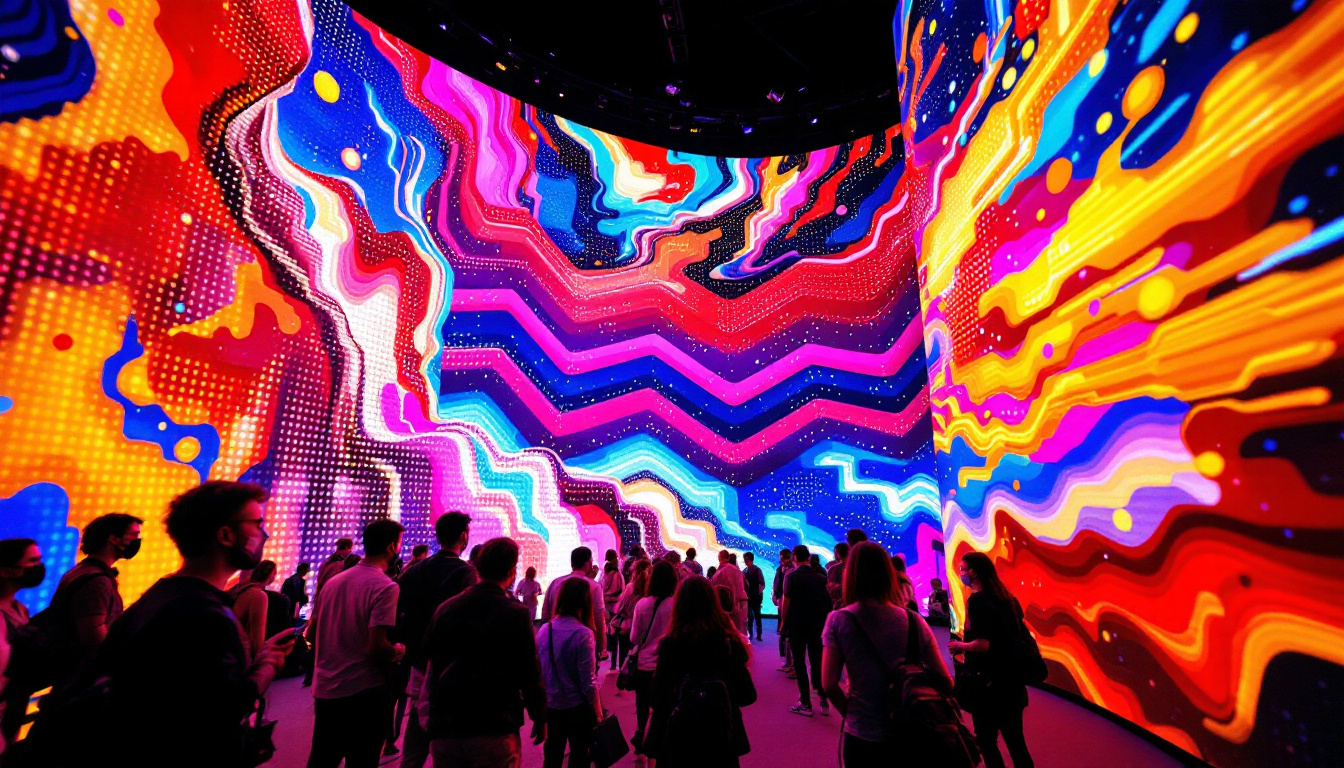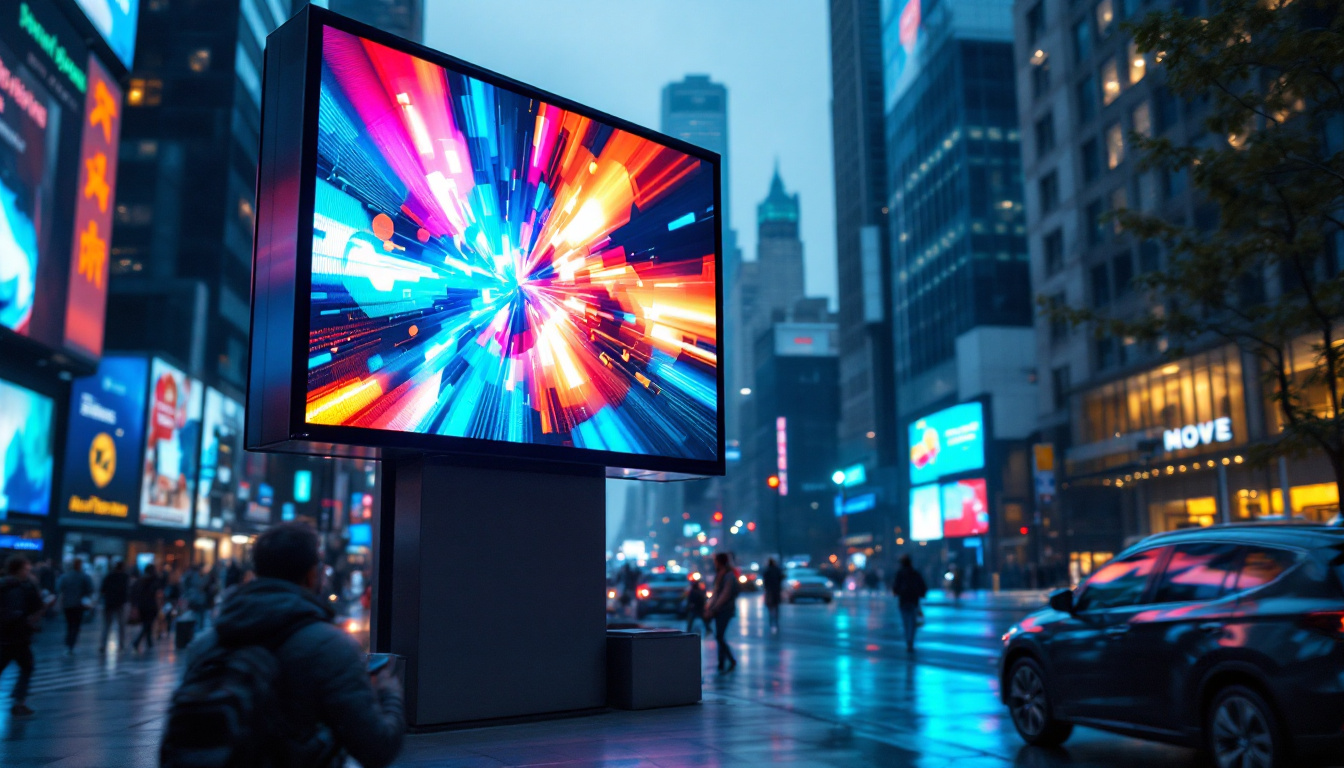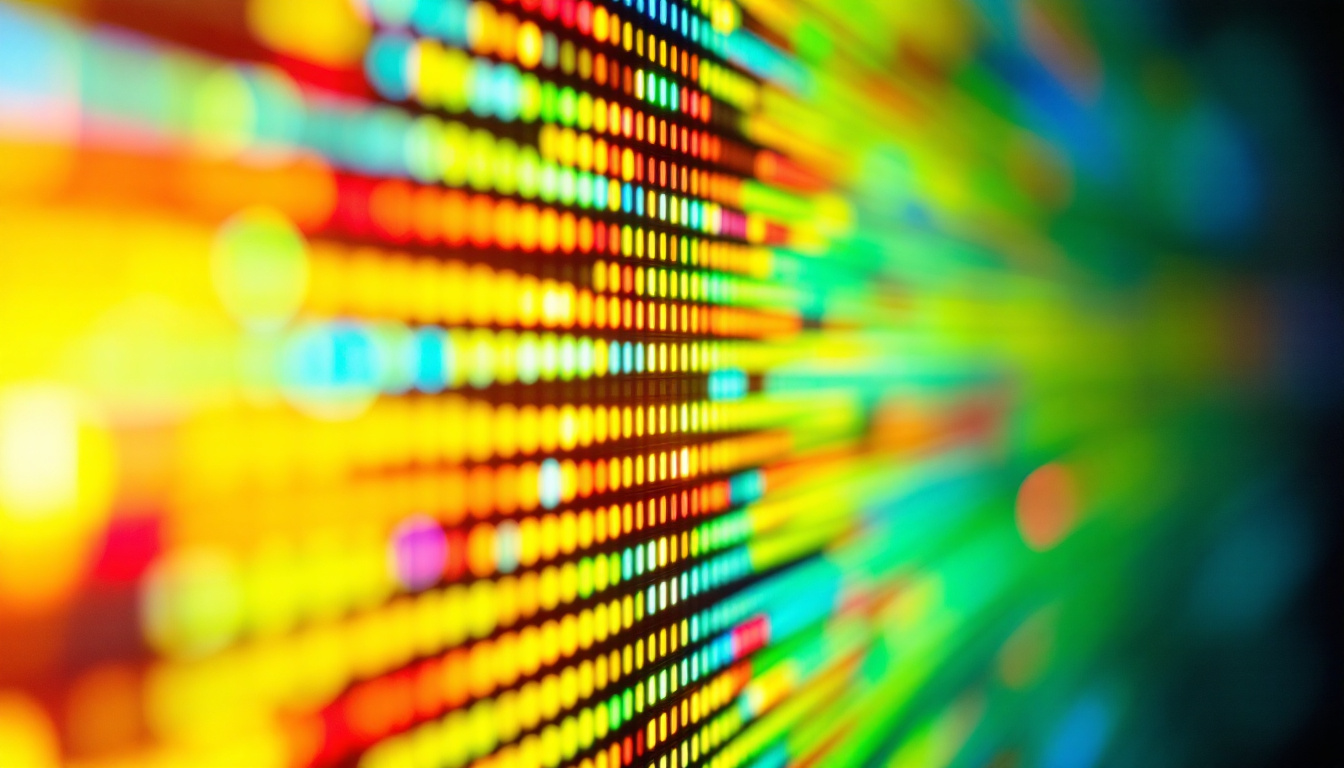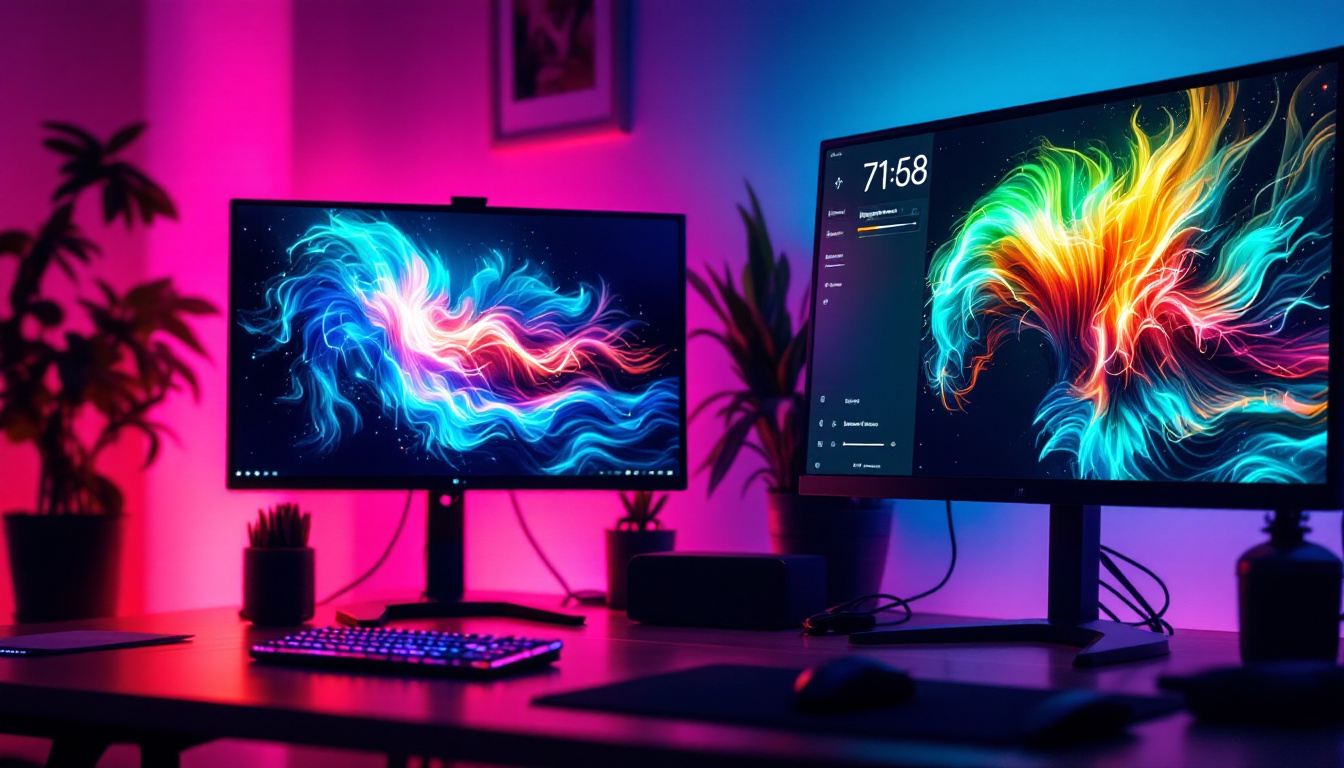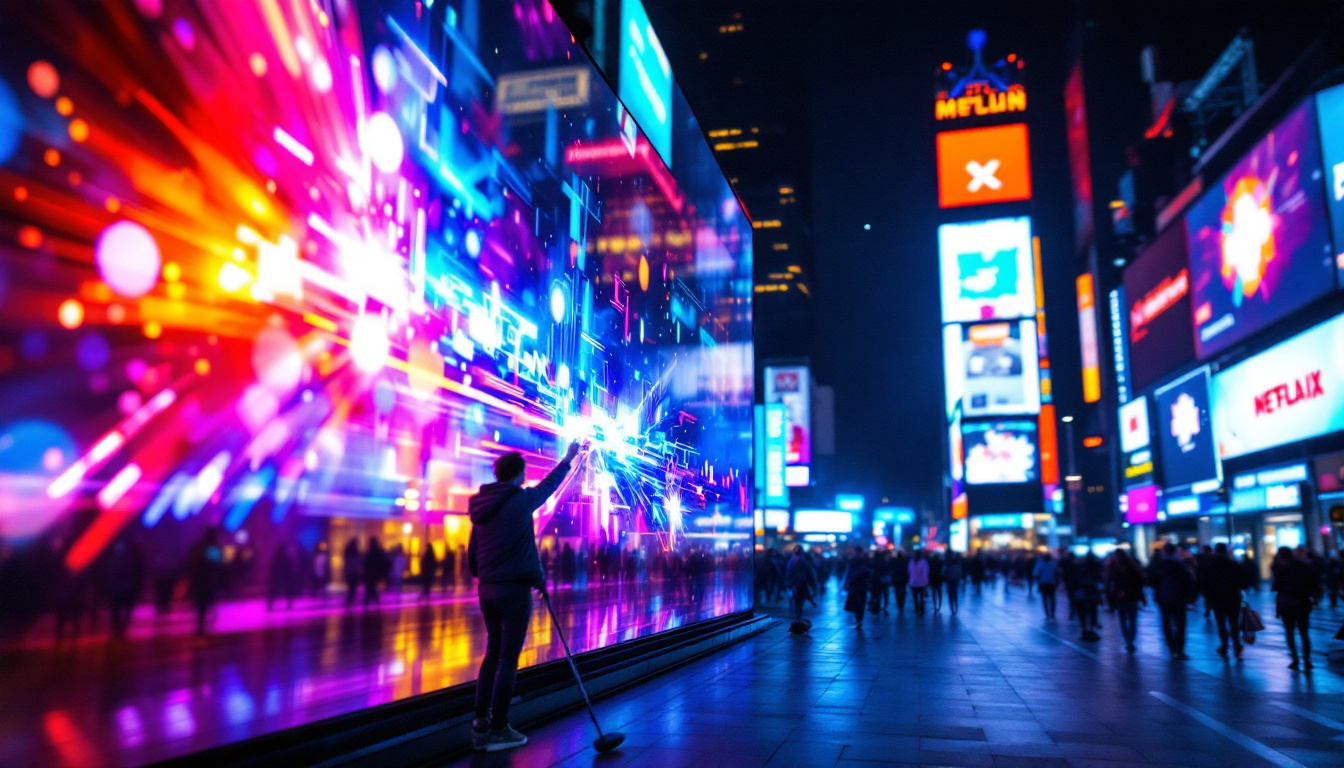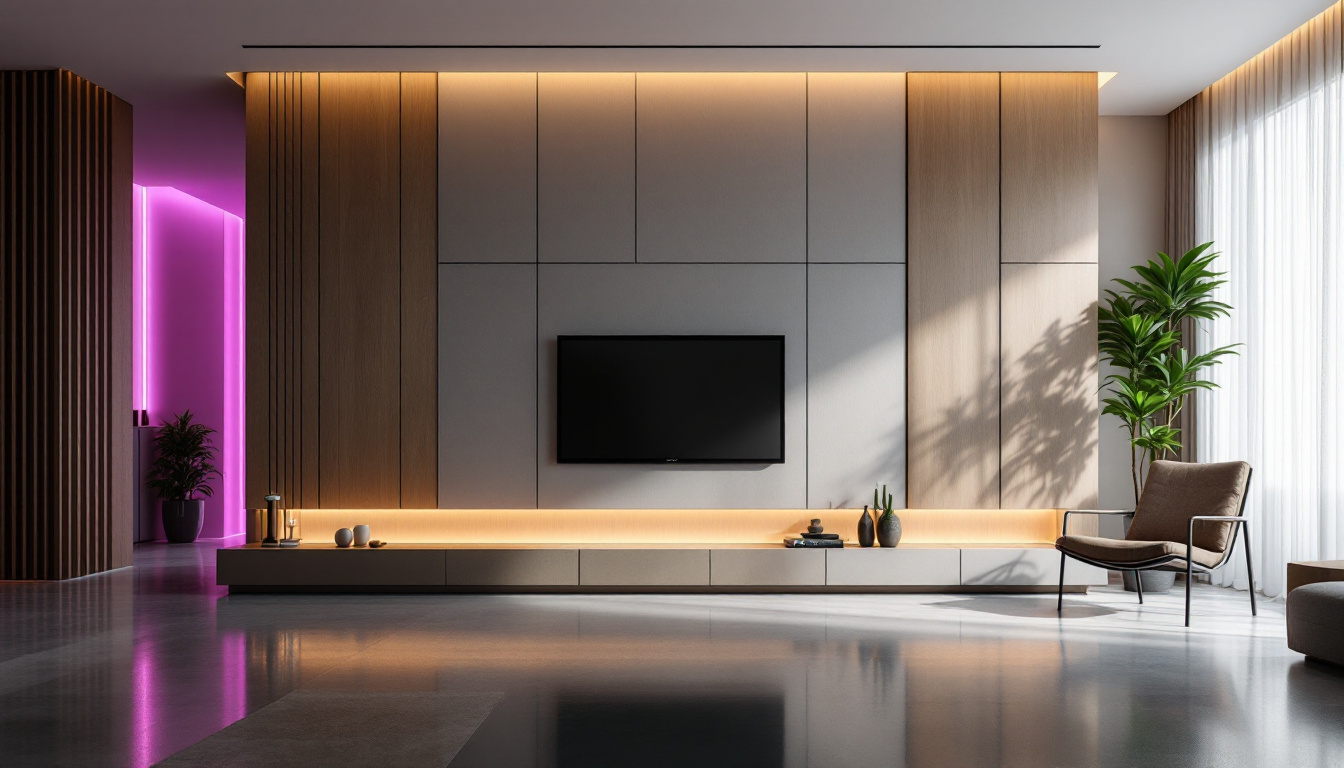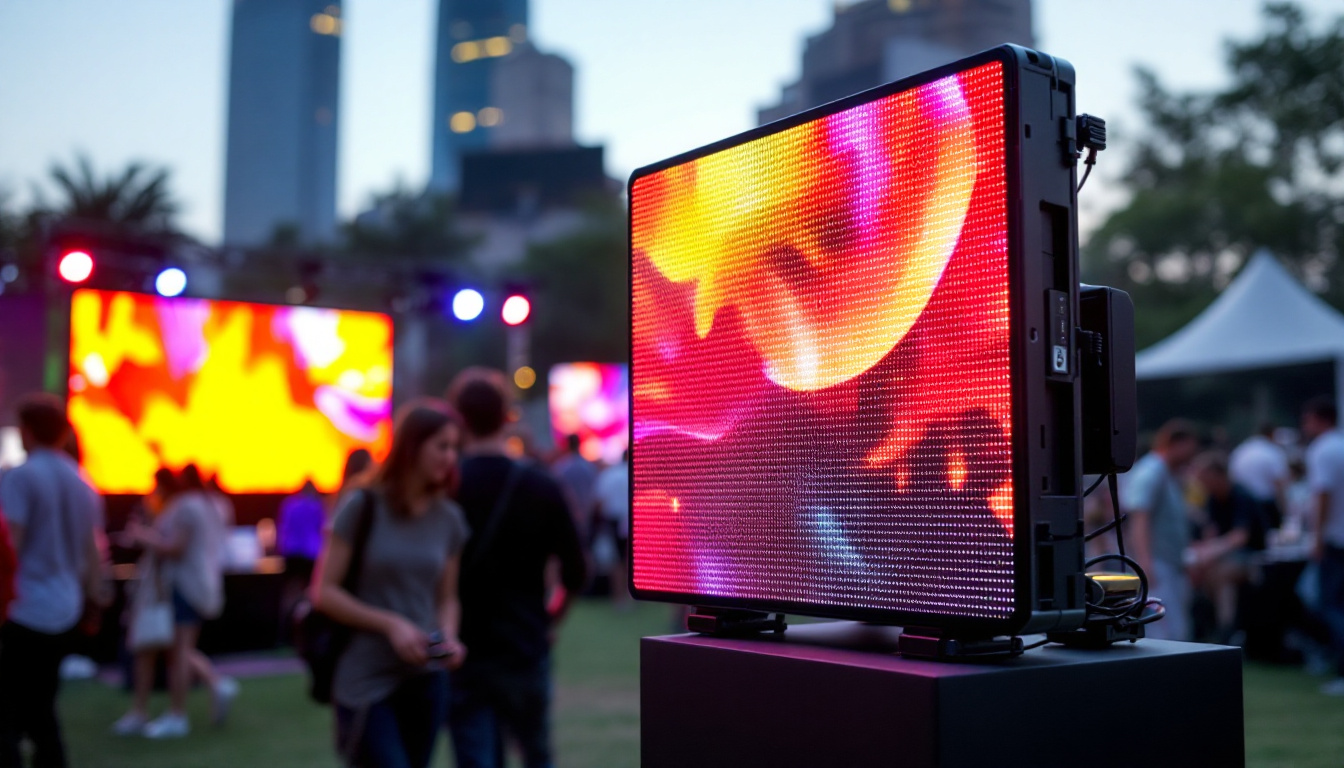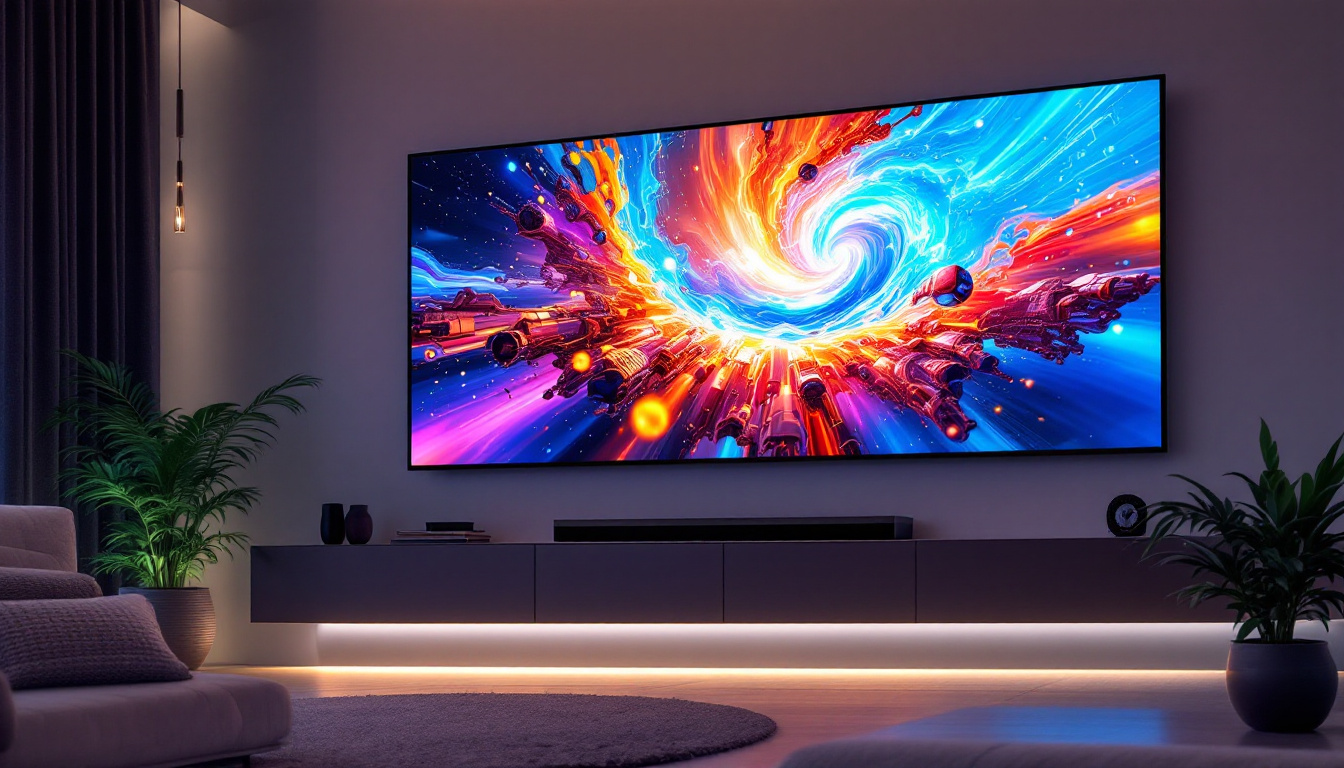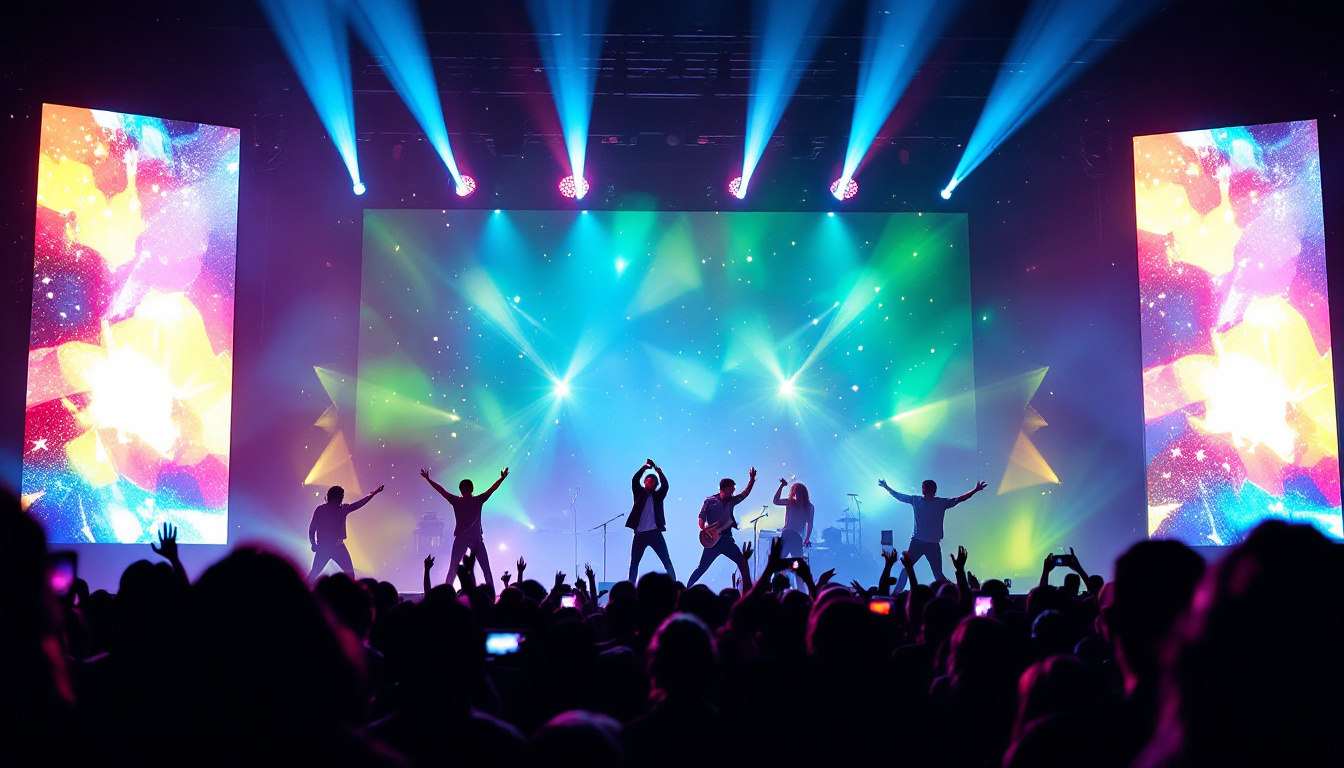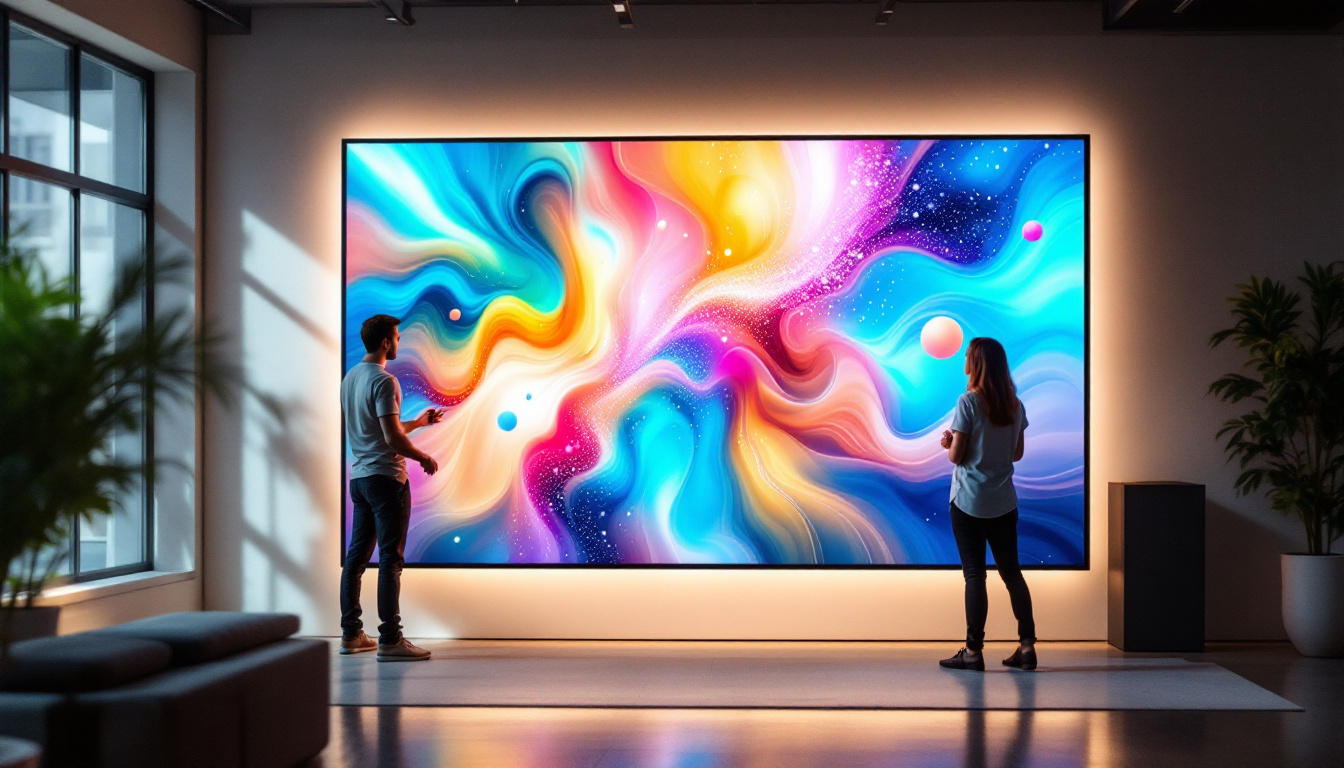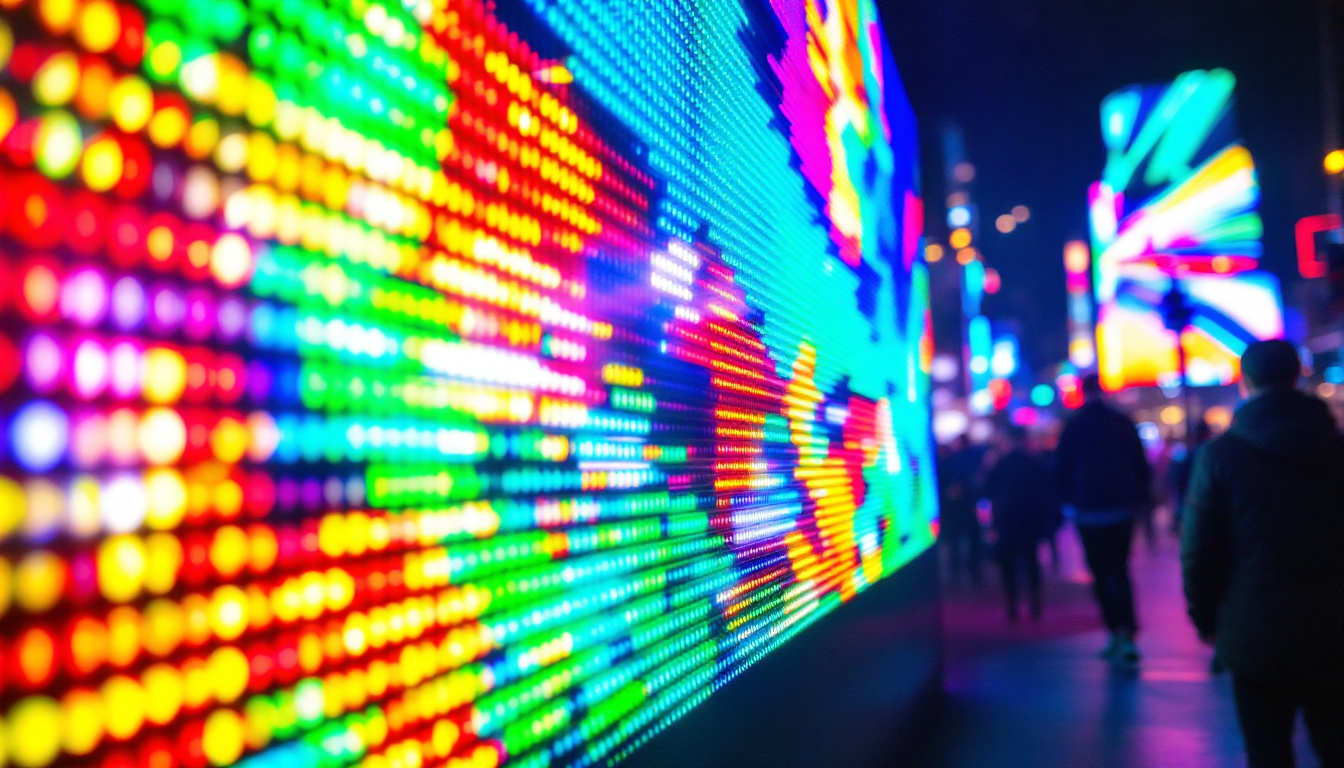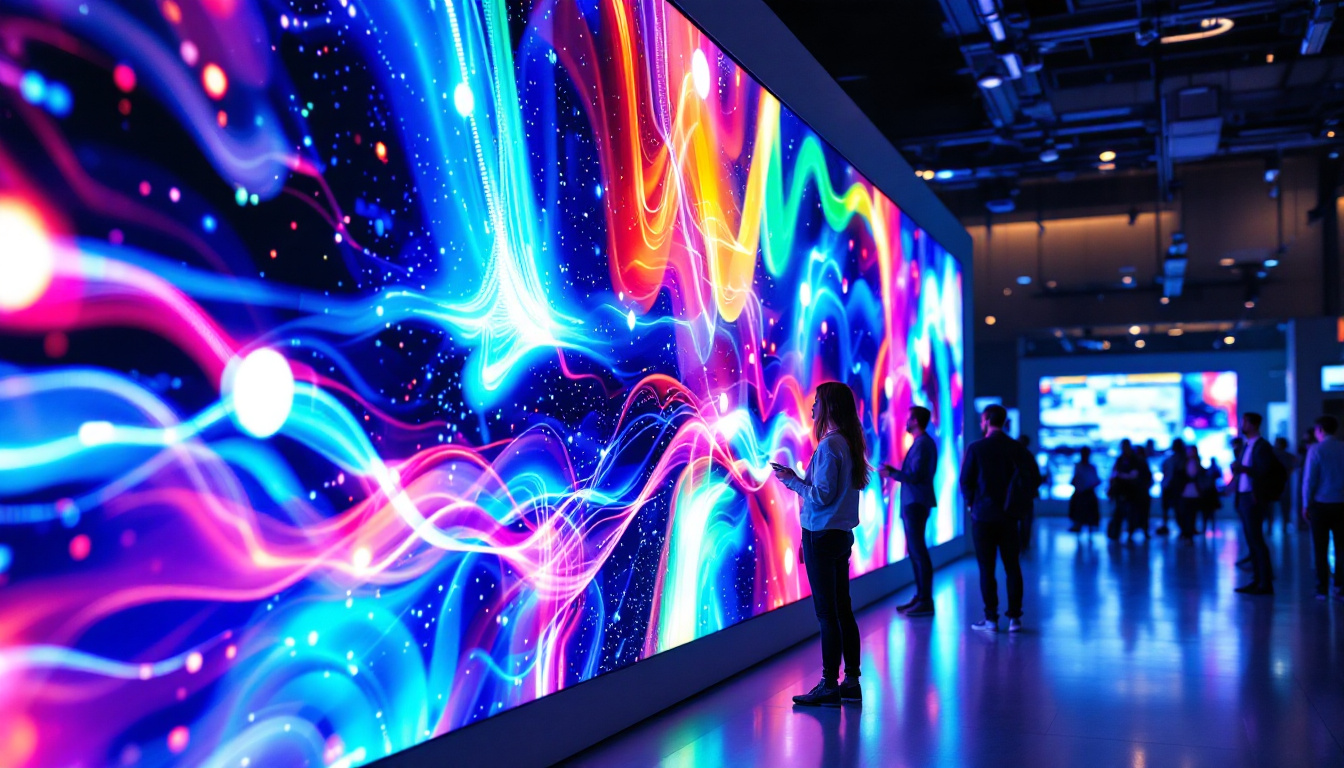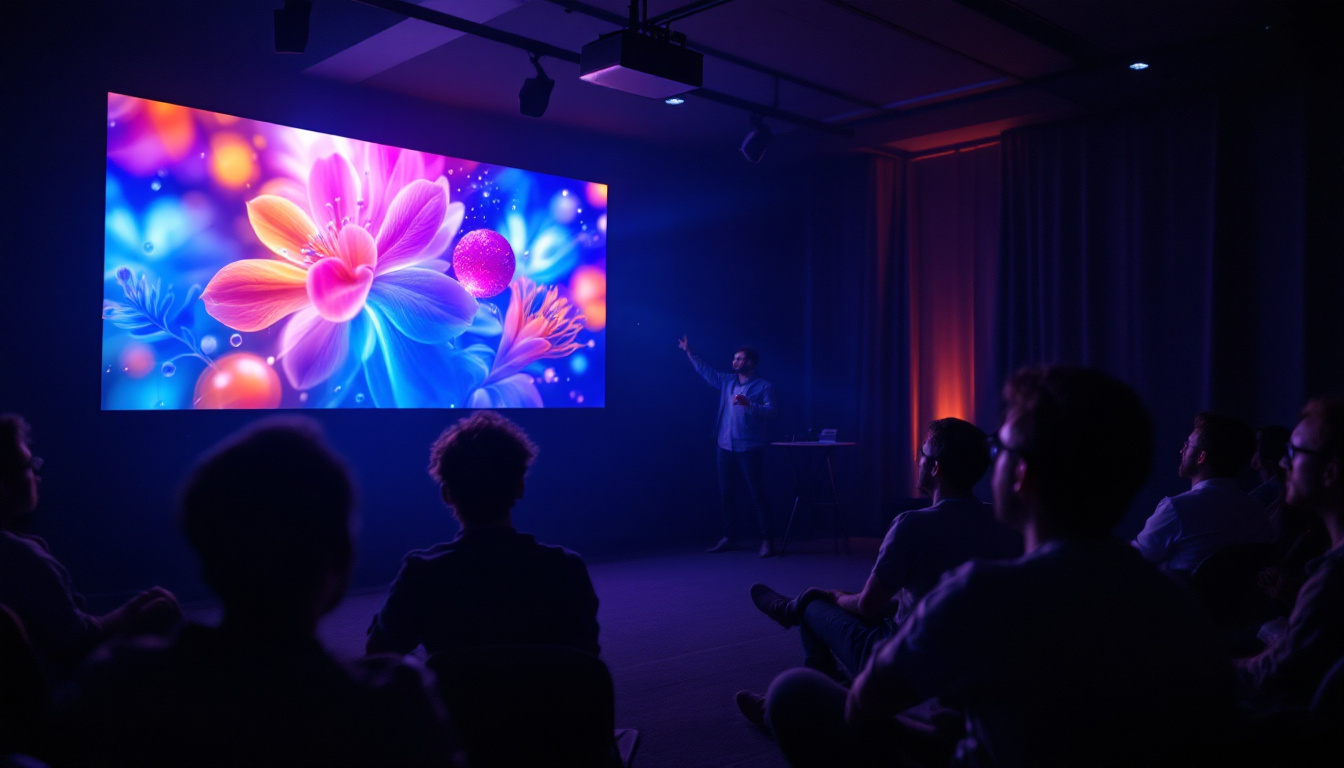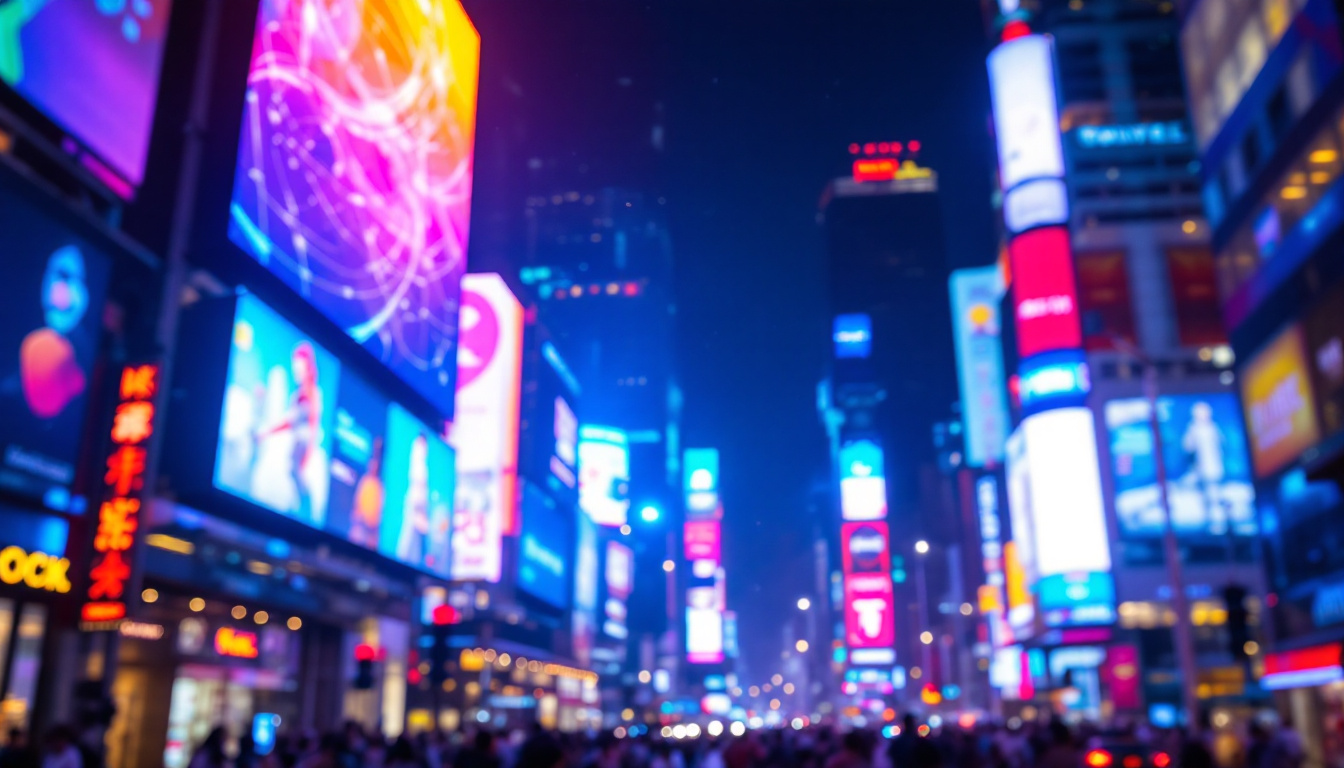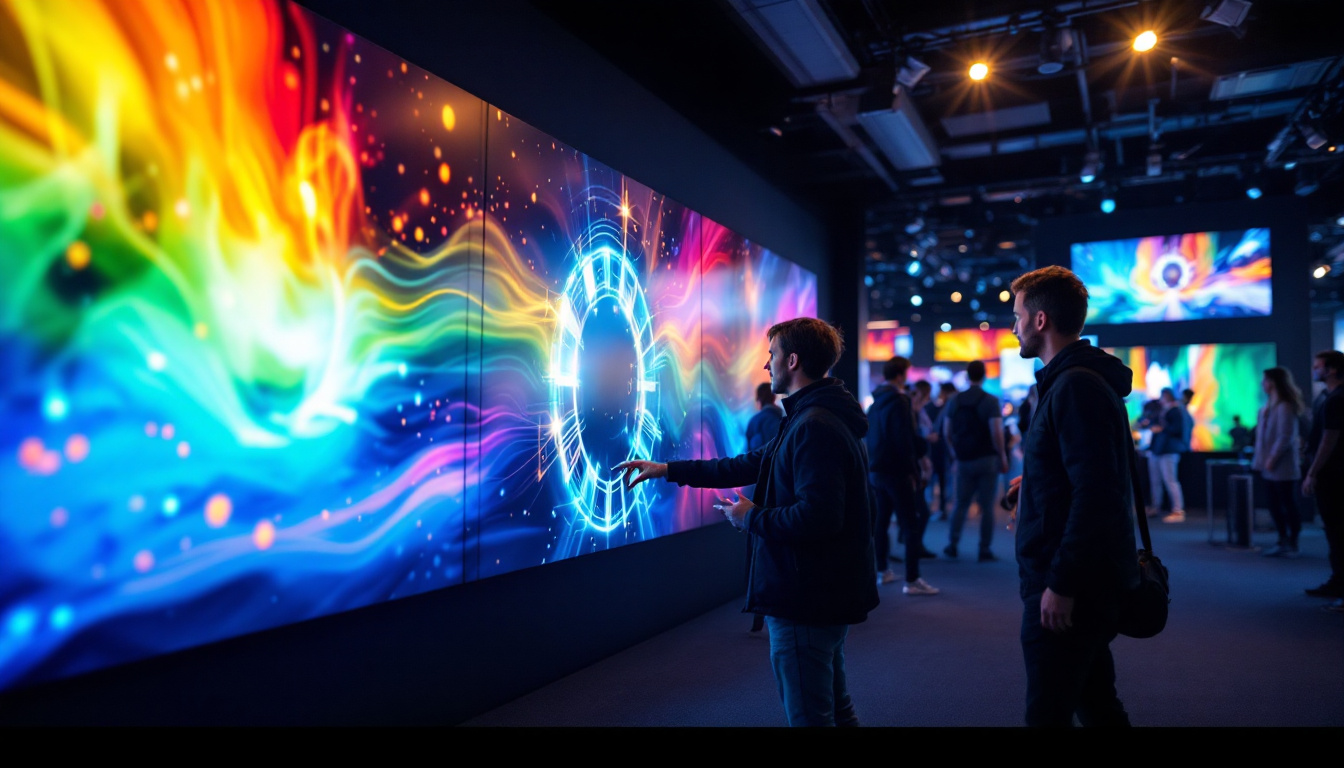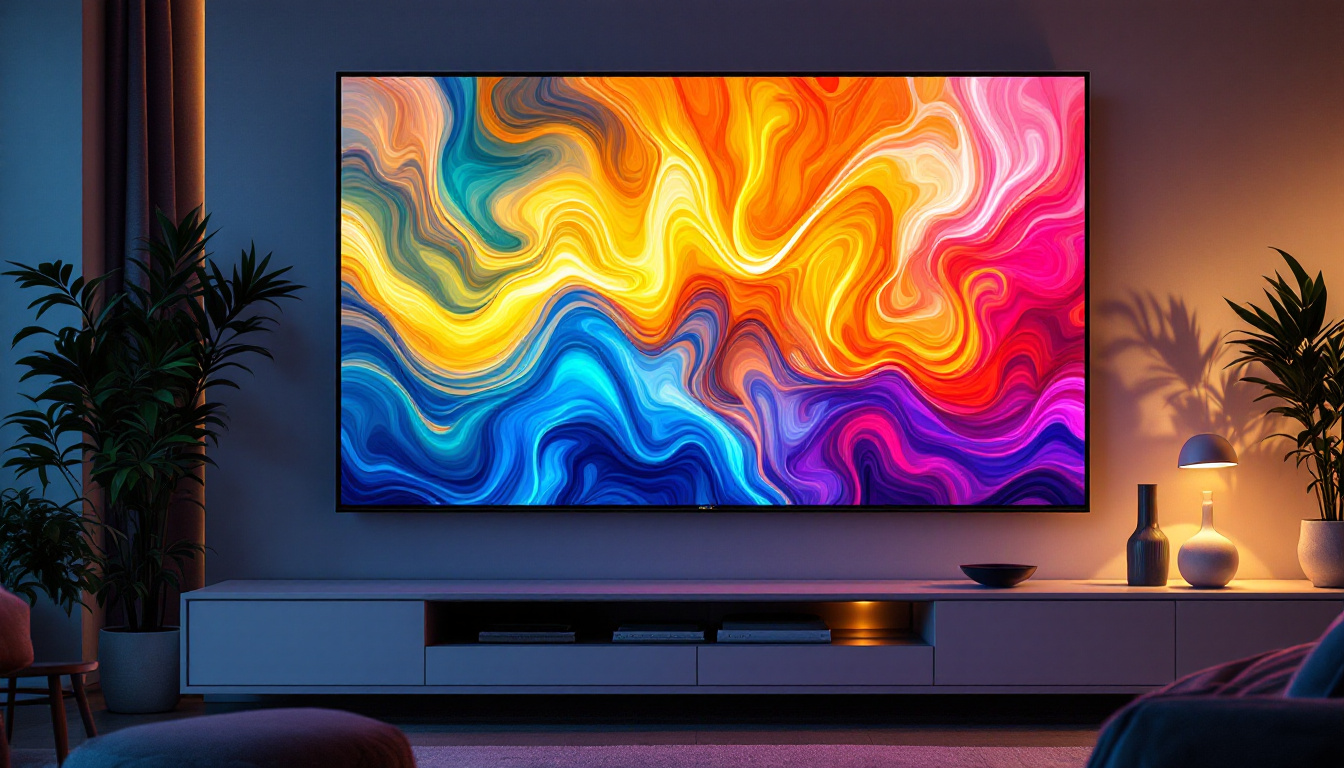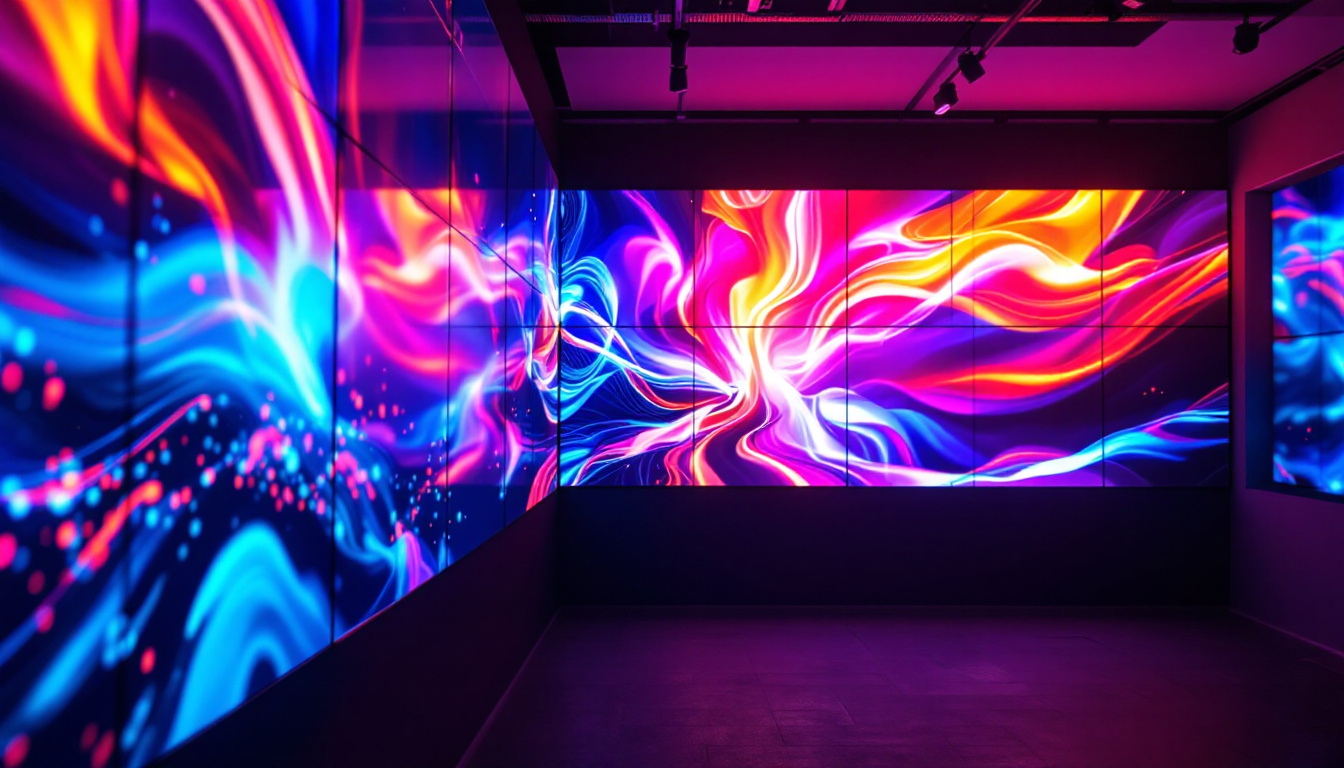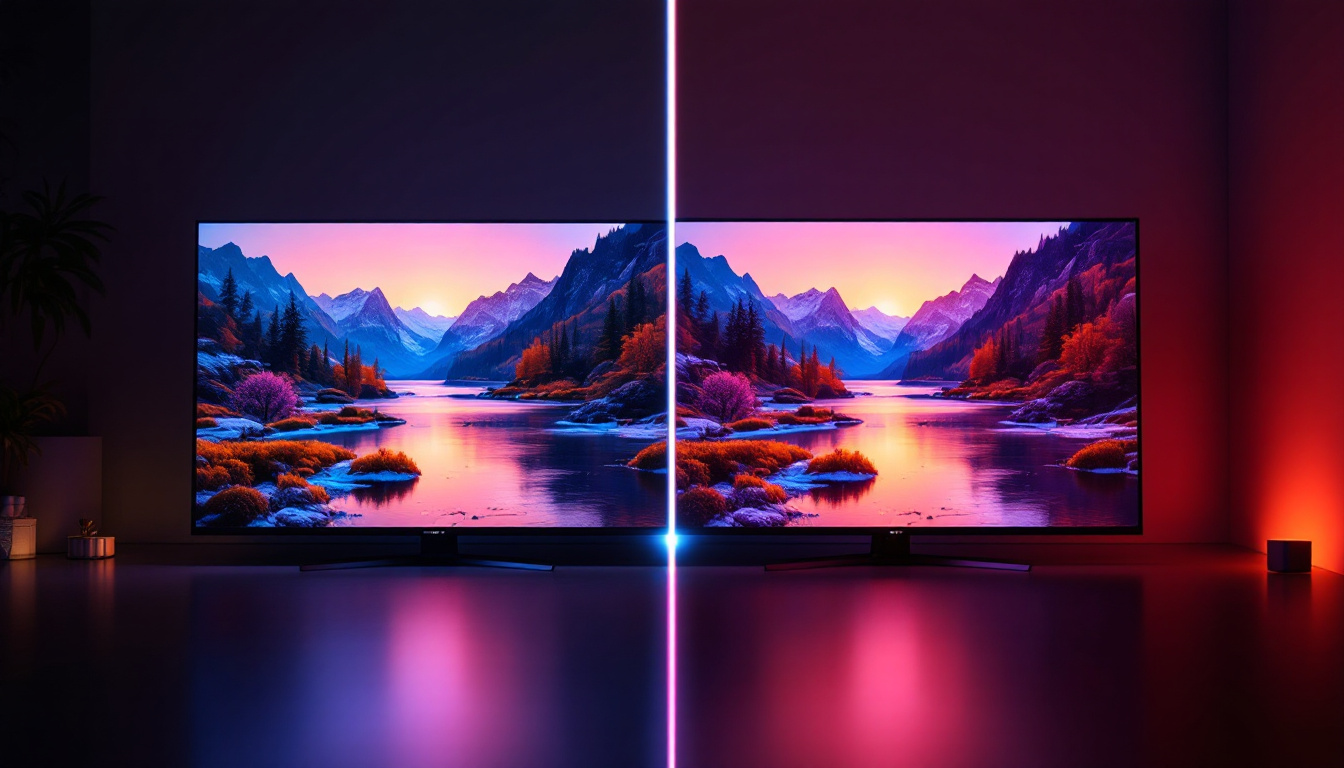In today’s digital landscape, LED displays have become a ubiquitous part of our daily lives. From large-scale billboards to the screens on our smartphones, these displays are integral to how we consume information and entertainment. This article delves into the intricacies of LED displays, focusing on their diagonal image capabilities, technology, and applications.
Understanding LED Technology
LED, or Light Emitting Diode, technology has revolutionized the way images and videos are displayed. Unlike traditional display technologies, LEDs use semiconductor materials to emit light when an electric current passes through them. This fundamental difference leads to numerous advantages, including energy efficiency, brightness, and longevity.
The Basics of LED Displays
LED displays consist of numerous tiny diodes arranged in a grid. Each diode acts as a pixel, contributing to the overall image. The color and brightness of each pixel can be adjusted independently, allowing for vibrant and dynamic visuals. This capability is particularly beneficial for applications that require high-definition images, such as advertising and entertainment.
One of the key features of LED displays is their ability to produce a wide color gamut. This means they can display a broader range of colors compared to traditional LCD screens. The result is more lifelike images that can capture the viewer’s attention more effectively. Furthermore, the rapid response time of LED technology enables smooth transitions and fast-moving visuals, making it ideal for video content and gaming experiences.
Types of LED Displays
There are several types of LED displays, each designed for specific applications. The most common types include:
- Direct View LED: These displays are made up of individual LED modules that create a larger screen. They are often used for outdoor advertising and large venues due to their high brightness and visibility.
- LED-backlit LCD: This technology combines LCD screens with LED backlighting, enhancing brightness and color accuracy. It is commonly found in televisions and computer monitors.
- OLED (Organic LED): While technically a different technology, OLED displays also use diodes to emit light. They provide excellent color reproduction and contrast ratios, making them popular for high-end televisions and smartphones.
In addition to these common types, there are also specialized LED displays designed for unique environments. For instance, transparent LED displays are gaining popularity in retail settings, allowing products behind the screen to remain visible while still showcasing dynamic advertisements. Similarly, flexible LED displays are being developed, enabling curved or irregular shapes that can fit into unconventional spaces, enhancing creativity in design. The versatility of LED technology continues to inspire innovation across various fields, from architecture to automotive displays, reflecting its importance in modern visual communication.
The Importance of Diagonal Image Display
Diagonal image display refers to the capability of LED screens to present images in a way that utilizes the full screen space, often at an angle. This feature is crucial for various applications, particularly in advertising and presentations, where capturing attention is essential. By strategically positioning images diagonally, brands can create a dynamic visual experience that stands out in a saturated market, making it easier for consumers to remember their messages.
Enhancing Visual Impact
Diagonal images can create a sense of depth and movement, making the content more engaging. This technique is particularly effective in advertising, where brands aim to create memorable impressions. By using diagonal lines and angles, designers can guide the viewer’s eye across the screen, ensuring that the most important information is highlighted. The psychological impact of diagonal imagery can also not be overlooked; studies have shown that viewers are more likely to engage with content that feels dynamic and alive, as opposed to static presentations.
Moreover, diagonal images can help in breaking the monotony of traditional rectangular displays. They can be particularly useful in environments where space is limited or when the display is viewed from different angles, such as in retail settings or exhibitions. In these scenarios, the diagonal presentation can also enhance the viewer’s experience by drawing them into the narrative of the display, making the content feel more immersive and interactive. This approach can transform a simple advertisement into a captivating story that resonates with the audience, encouraging them to explore further.
Technical Considerations
When designing for diagonal image displays, several technical factors must be considered. The resolution of the display plays a critical role in how well diagonal images are rendered. Higher resolutions ensure that images remain sharp and clear, even when viewed from close distances. This clarity is vital, especially in high-stakes environments like trade shows or product launches, where every detail counts in making a lasting impression.
Additionally, the aspect ratio of the display can affect how diagonal images are perceived. A wider aspect ratio may enhance the impact of diagonal designs, allowing for more creative freedom in layout and composition. Designers must also take into account the color calibration and brightness levels of the display, as these factors can significantly influence the effectiveness of diagonal imagery. A well-calibrated screen can bring out vibrant colors and contrasts, further enhancing the visual appeal and ensuring that the diagonal elements pop against the background, drawing the viewer’s attention exactly where it is needed most.
Applications of LED Displays
LED displays are employed across various industries, each leveraging their unique capabilities to enhance communication and engagement. Here are some notable applications:
Advertising and Marketing
In the advertising sector, LED displays are a game-changer. They allow brands to showcase dynamic content that can change in real-time, making advertisements more relevant and engaging. For instance, digital billboards can display different messages depending on the time of day or audience demographics, maximizing their impact.
Furthermore, the ability to use diagonal images in advertisements can help create visually striking campaigns that stand out in crowded environments. This approach not only captures attention but also enhances brand recall.
Events and Entertainment
LED displays are a staple in the events and entertainment industry. Concerts, sports events, and exhibitions often utilize large LED screens to provide audiences with immersive experiences. The diagonal image capability allows for creative staging and presentation, enhancing the overall visual experience.
For example, during a concert, diagonal images can be used to create dynamic backdrops that move and change in sync with the performance, adding an extra layer of excitement for the audience.
Corporate and Educational Settings
In corporate environments, LED displays are increasingly used for presentations and meetings. Their ability to present information clearly and engagingly makes them ideal for conveying complex ideas. Diagonal images can enhance presentations by emphasizing key points and guiding the audience’s focus.
Similarly, educational institutions are adopting LED displays for classrooms and auditoriums. The visual impact of diagonal images can aid in teaching, making lessons more interactive and memorable for students.
Advantages of LED Displays
LED displays offer a myriad of advantages that contribute to their widespread adoption. Understanding these benefits can help organizations make informed decisions regarding their use.
Energy Efficiency
One of the standout features of LED technology is its energy efficiency. LED displays consume significantly less power compared to traditional display technologies. This not only reduces operational costs but also minimizes the environmental impact, making them a sustainable choice for businesses.
Longevity and Durability
LED displays are known for their longevity. With a lifespan that can exceed 50,000 hours, they require less frequent replacement than traditional displays. This durability is particularly advantageous for outdoor applications, where exposure to the elements can shorten the lifespan of other display types.
High Brightness and Contrast
LED displays can achieve high brightness levels, making them visible even in bright sunlight. This feature is crucial for outdoor advertising and other applications where visibility is paramount. Additionally, the contrast ratio of LED displays allows for deeper blacks and brighter whites, enhancing the overall image quality.
Challenges and Considerations
Despite their many advantages, LED displays also come with challenges that must be addressed. Understanding these challenges can help users make better decisions when implementing LED technology.
Initial Costs
While LED displays offer long-term savings, the initial investment can be substantial. High-quality LED screens, especially those designed for professional use, can be expensive. Organizations must weigh the upfront costs against the potential benefits and savings over time.
Heat Generation
LED displays generate heat during operation, which can be a concern, particularly in large installations. Proper ventilation and cooling systems may be required to ensure optimal performance and longevity. Failure to address heat issues can lead to decreased performance and a shorter lifespan for the display.
Content Management
Managing content on LED displays can be complex, especially for large-scale installations with multiple screens. Organizations need effective content management systems to schedule and update content seamlessly. This requirement can add to the operational complexity and may necessitate additional training for staff.
The Future of LED Displays
The future of LED displays looks promising, with ongoing advancements in technology and design. As the demand for high-quality visual experiences continues to grow, LED technology is expected to evolve in several key areas.
Improved Resolution and Pixel Density
Future LED displays are likely to feature higher resolutions and pixel densities, allowing for even more detailed images. This improvement will enhance the viewing experience, particularly for applications requiring close-up viewing, such as in retail environments or exhibitions.
Integration with Smart Technology
As smart technology becomes more prevalent, LED displays will likely integrate with IoT devices and systems. This integration could enable real-time content updates and interactivity, allowing for more dynamic and engaging experiences for viewers.
Enhanced Sustainability
With growing concerns about environmental sustainability, future LED displays may focus on using eco-friendly materials and manufacturing processes. This shift could further enhance their appeal as a sustainable choice for businesses and organizations.
Conclusion
LED displays have transformed the way images and information are presented, offering numerous advantages that cater to a wide range of applications. Their ability to display diagonal images enhances visual impact, making them particularly effective in advertising, entertainment, and corporate settings.
While challenges exist, the benefits of LED technology far outweigh the drawbacks, making it a valuable investment for organizations looking to enhance their visual communication strategies. As technology continues to advance, the future of LED displays promises even greater innovation and integration, ensuring they remain at the forefront of digital display solutions.
In a world where visual communication is paramount, understanding and leveraging the capabilities of LED displays can lead to more engaging and effective interactions with audiences.
Discover LumenMatrix’s Innovative LED Solutions
Ready to elevate your visual communication with cutting-edge LED technology? Explore LumenMatrix’s comprehensive range of LED display modules, from vibrant Indoor and Outdoor LED Wall Displays to dynamic Vehicle and Sports LED Displays. Whether you’re looking to captivate passersby with an LED Poster Display, engage fans with a Floor LED Display, or create a unique visual narrative with Custom and All-in-One LED solutions, LumenMatrix has you covered. Experience the future of digital signage with our LED Transparent Displays and revolutionize the way your brand connects with audiences. Check out LumenMatrix LED Display Solutions today and transform your visual storytelling with unparalleled clarity and impact.

